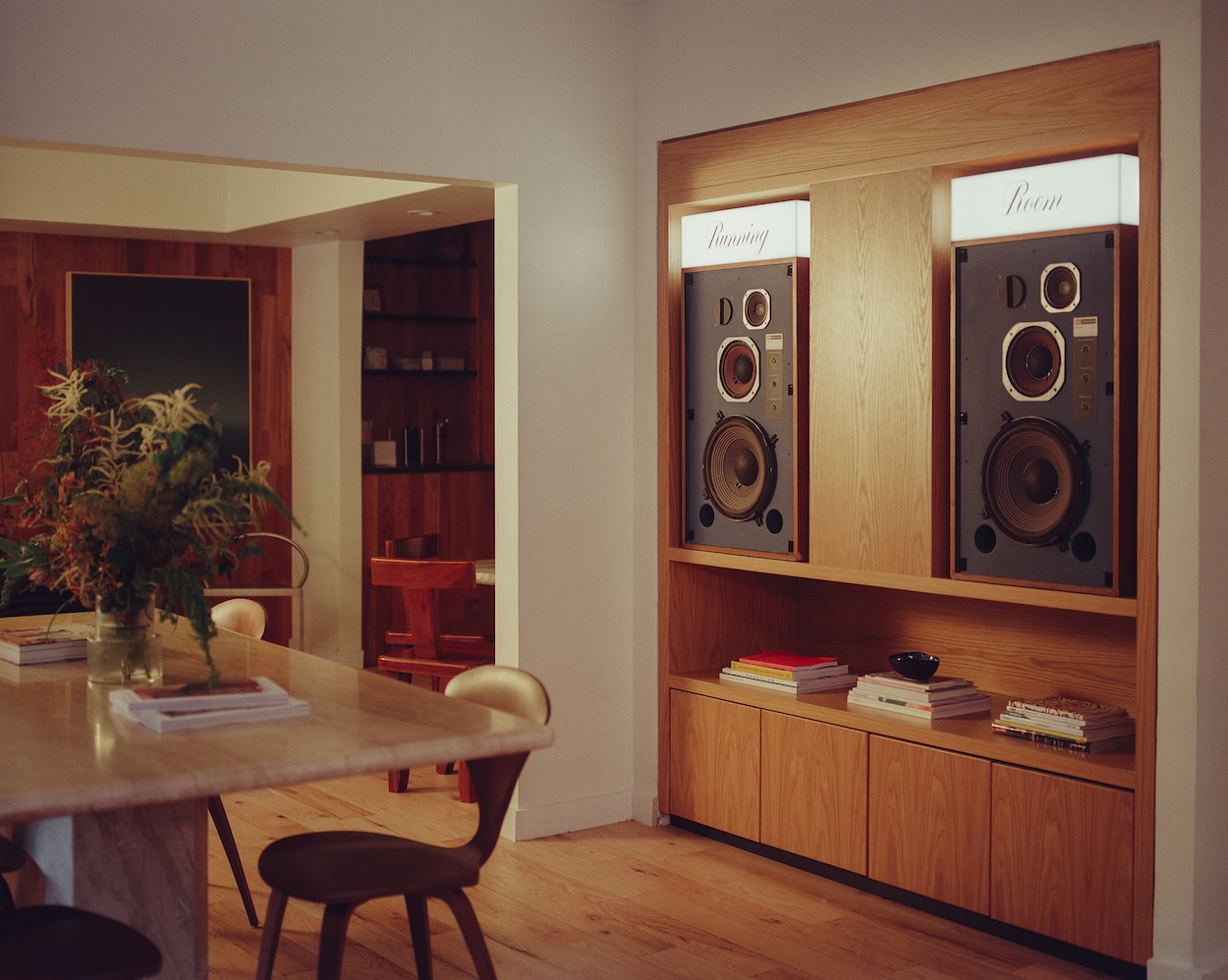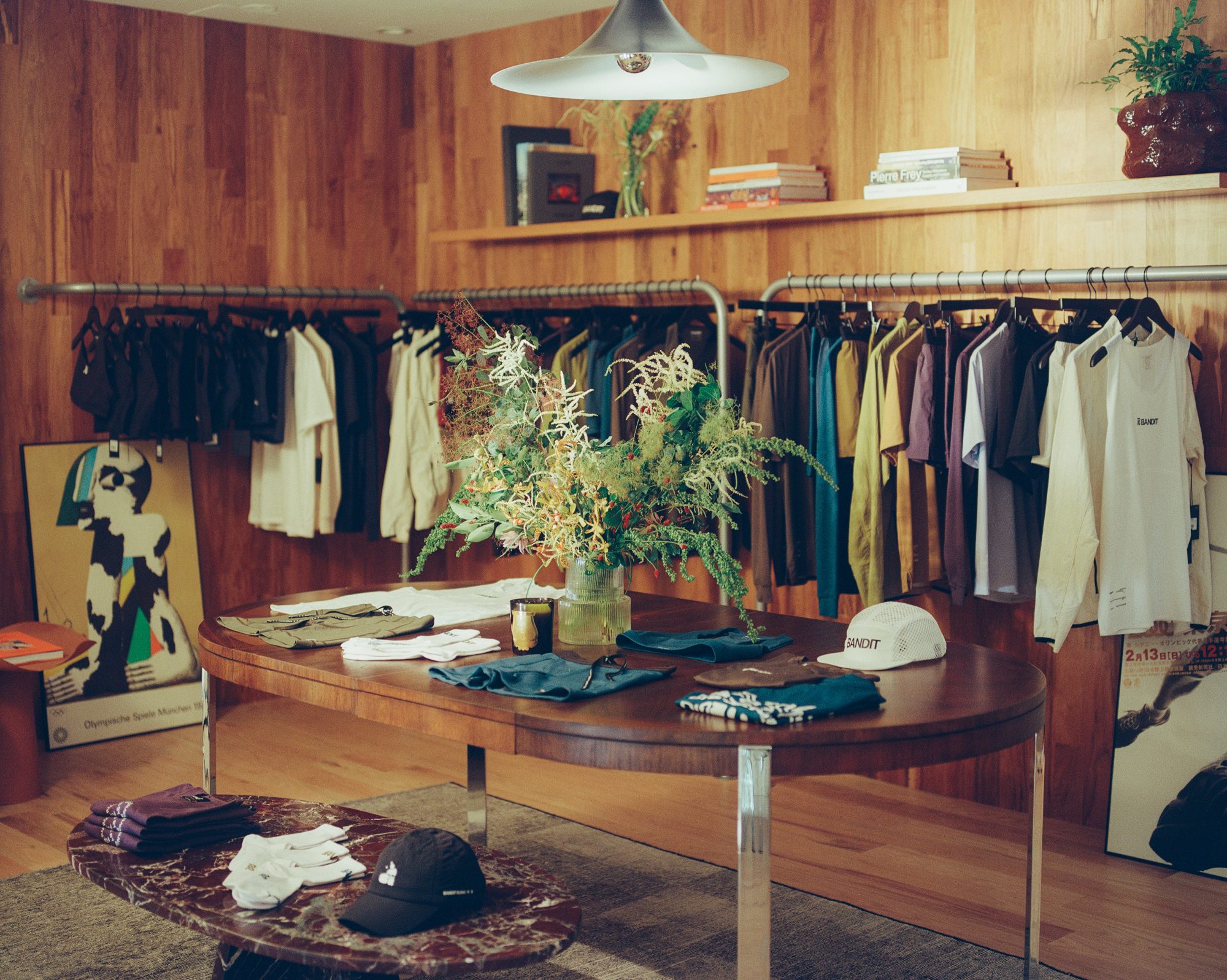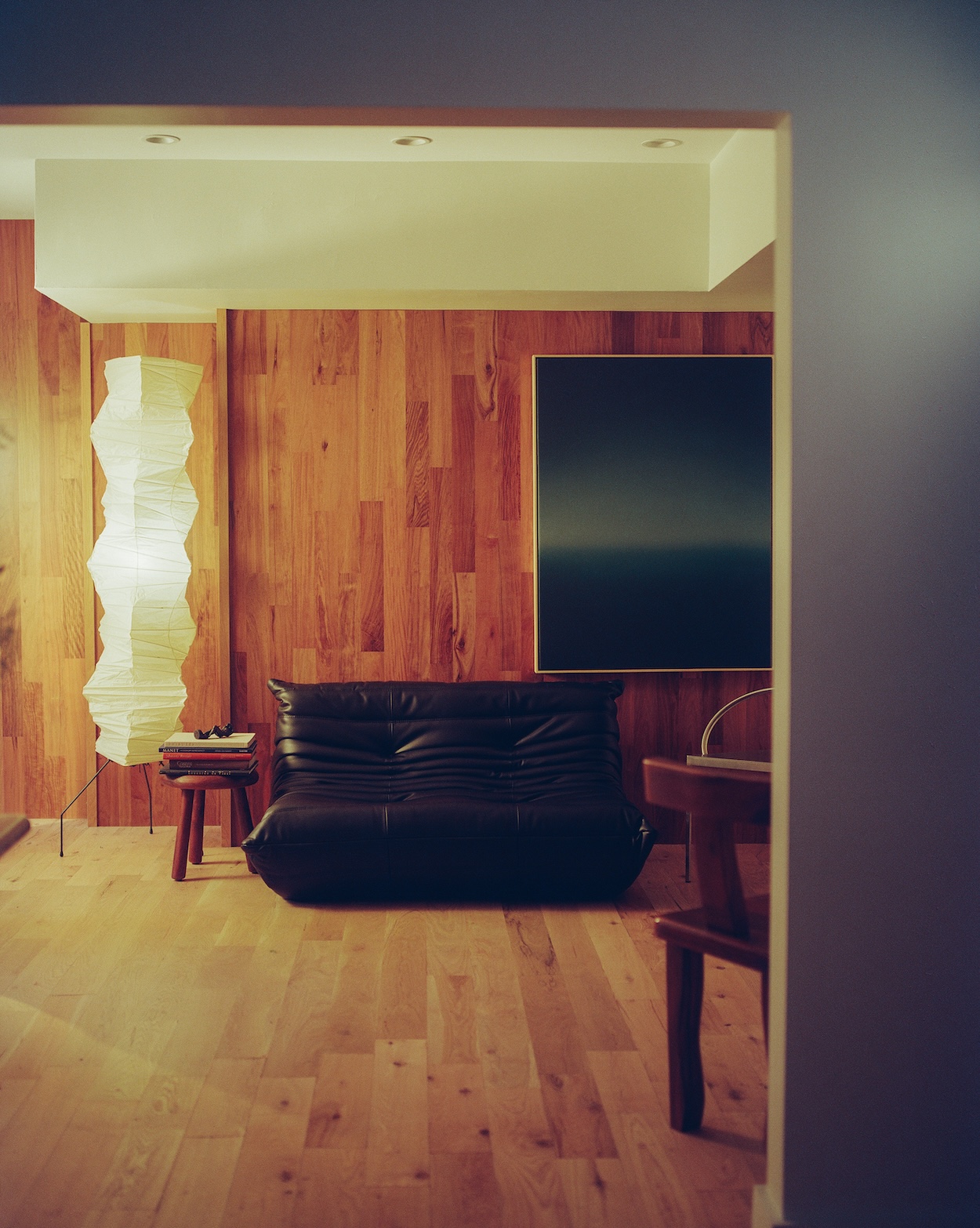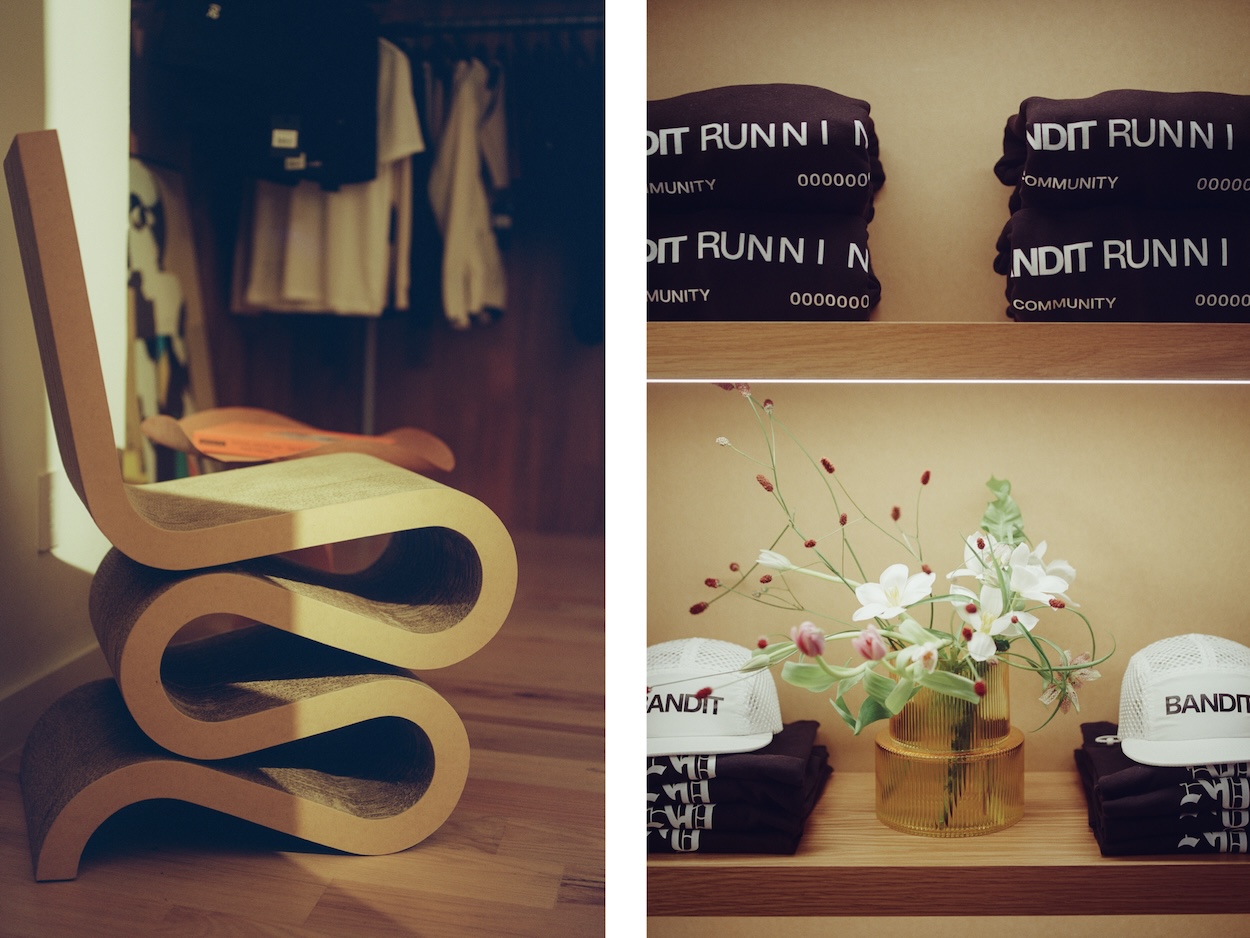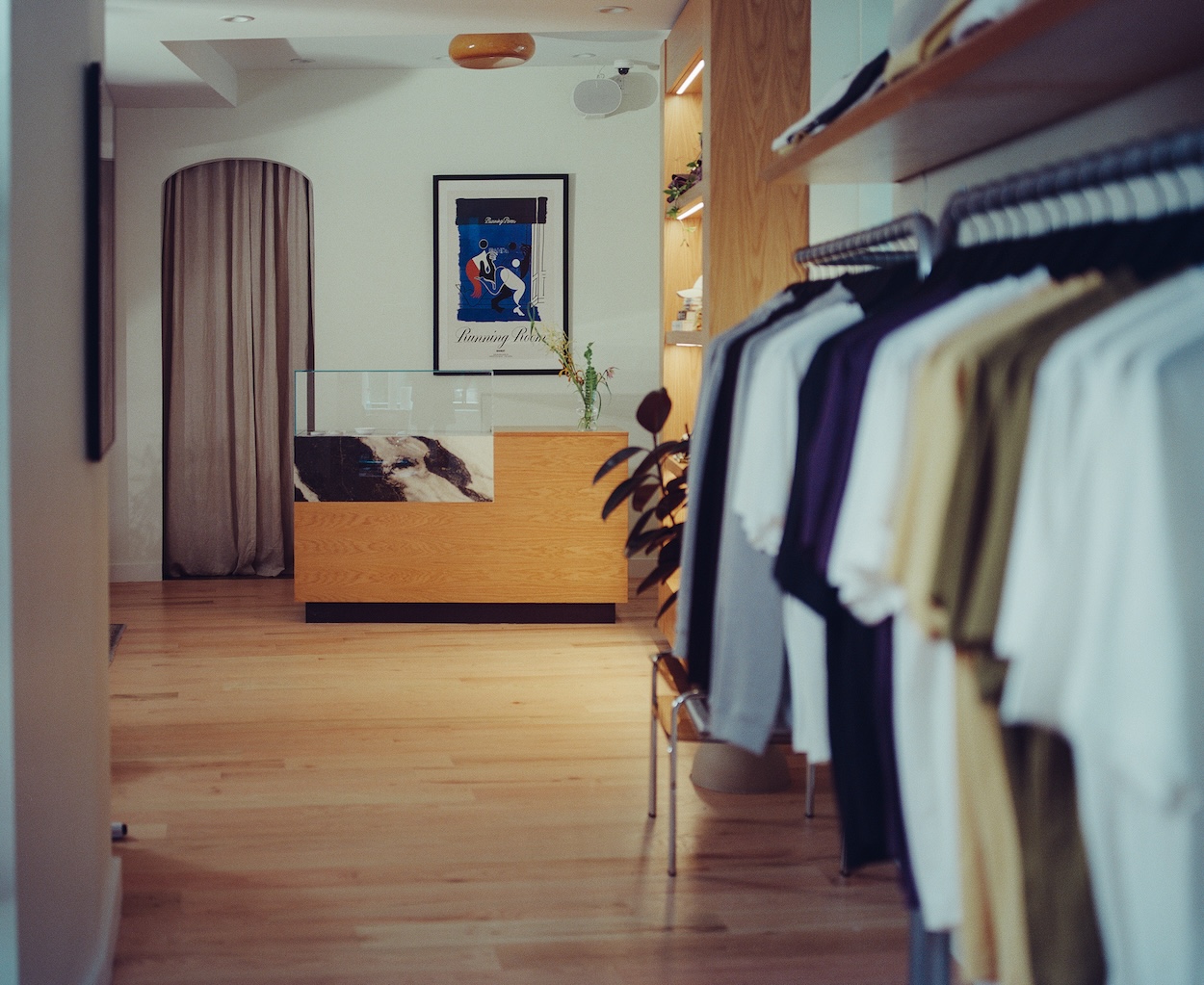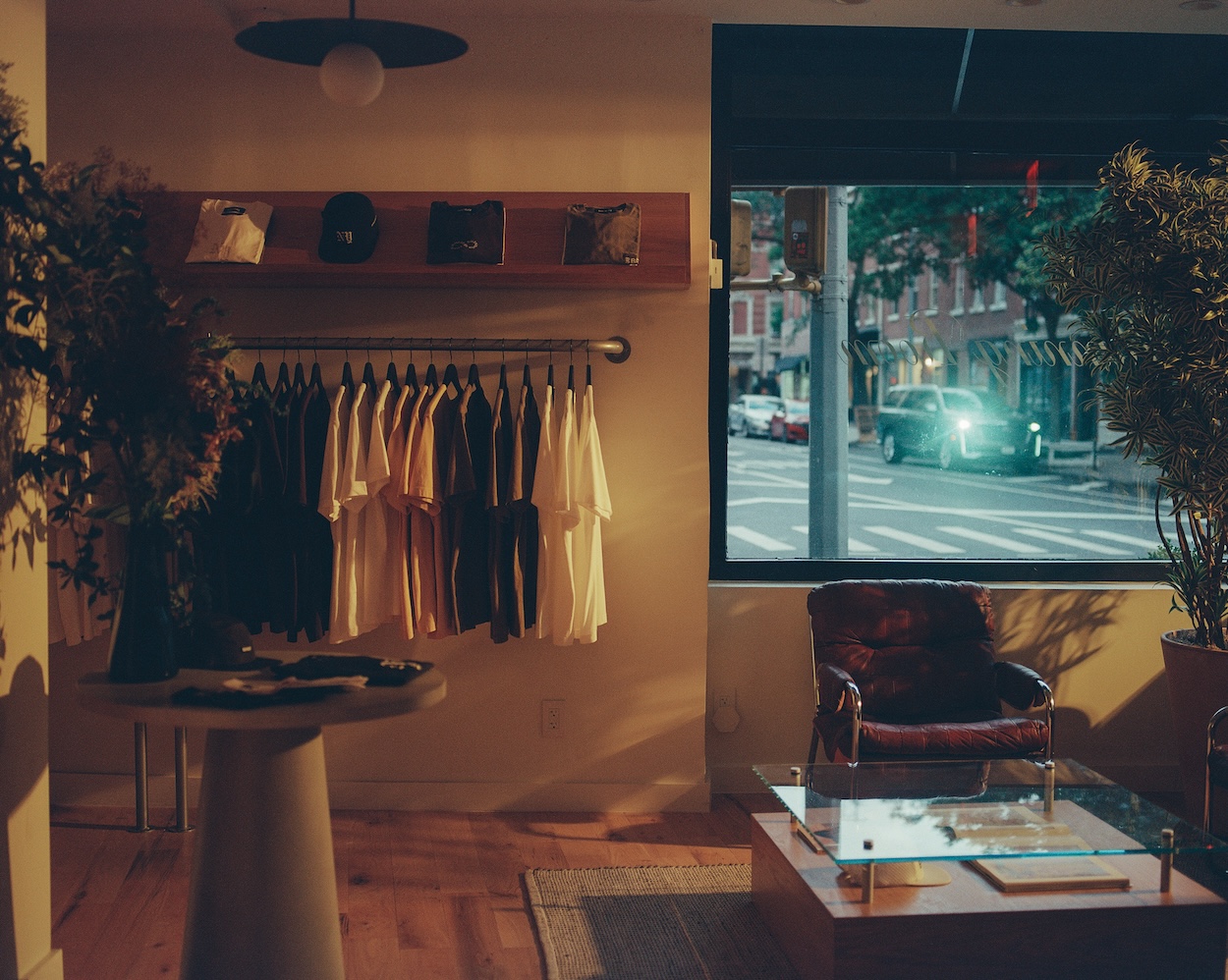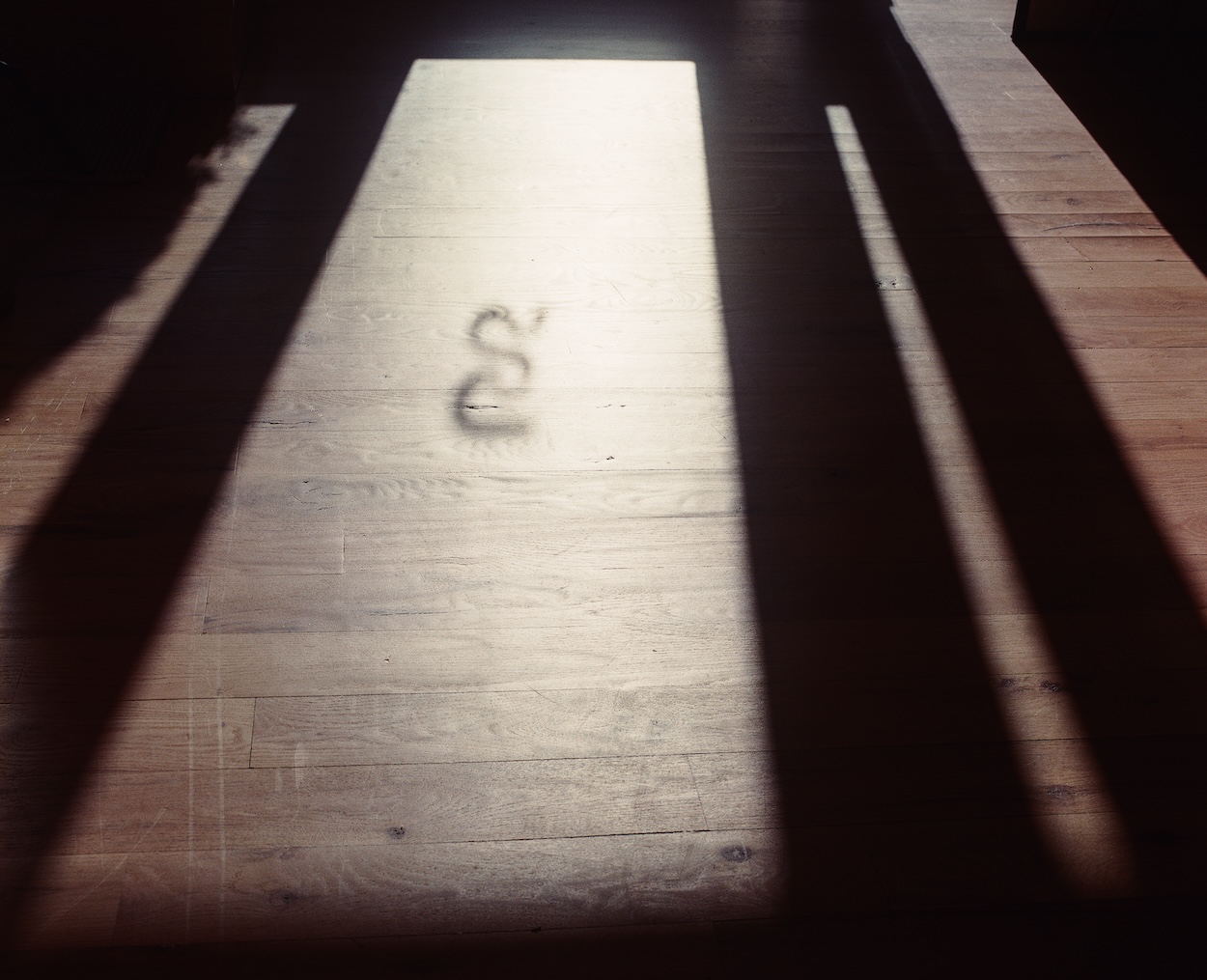At Bandit’s West Village flagship, visitors are as likely to encounter the latest issue of Gagosian Quarterly and a Frank Gehry Wiggle Chair as they are a glossy edit of running gear built to withstand marathon training distances and beyond. The Brooklyn-born brand burst onto the scene four years ago and soon became a cult-favorite for its tights, shorts, tops, and accessories informed by Chloé archives, Wales Bonner’s runways, and the oeuvre of abstract expressionist artist Robert Breer. For its Bleecker Street shop, which opened in the summer, Bandit’s lead designer and architect Ale Iaccarino found abundant inspiration in Tokyo’s café culture, Paris Design Week, and the practices of Maya Lin and Isamu Noguchi.
To that effect, warm wood paneling and millwork envelops the shop and holds everything from artist monographs to plush pullovers and JBL 4315 speakers from 1981. A projector, mammoth travertine table, and plush seating like a Togo sofa allow the space to function as a community hub and host watch parties for events like the Paris Olympics—where the brand’s uniforms for Saint Vincent and the Grenadines were on full display. The Running Room, as the brand calls it, also hosts the only Manhattan outpost of Greenpoint’s Rhythm Zero café, named after the six-hour-long performance by Marina Abramović.
“All of the furniture was sourced from vintage auctions or local sellers,” says Iaccarino, who looked to LiveAuctioneers and CityFoundry for their “impeccably curated selection of 20th century furniture, lighting, art and artifacts.” These include a black trumpeted aluminum pendant light, Lane Altavista walnut-and-chrome dining table from the 1960s, and an oxblood marble coffee table that, together, form a focal point of the wood-paneled retail salon.
The Running Room also serves an object lesson in the closely intertwined history of fine art and sport thanks to archival Olympic Games posters sourced from the Poster Museum in Tribeca. “A beautiful part of archival Olympic posters is the history of artists across the world [who were] commissioned to create spectacular pieces in commemoration of these moments.”
Exactly how well does a trove of collectible design and museum-caliber Olympic Games ephemera stack up against the constant flow of foot traffic from tourists ambling around the West Village, and a dedicated local following that shows up to training runs a couple hundred-strong? That’s a question Iaccarino and the rest of the team take in stride. “We believe in analogous research and inspiration as key pieces to disrupting the running industry,” she says. “The running industry is only going to evolve if we reference and tap into other industries, such as art and design, to inform our approach.”
